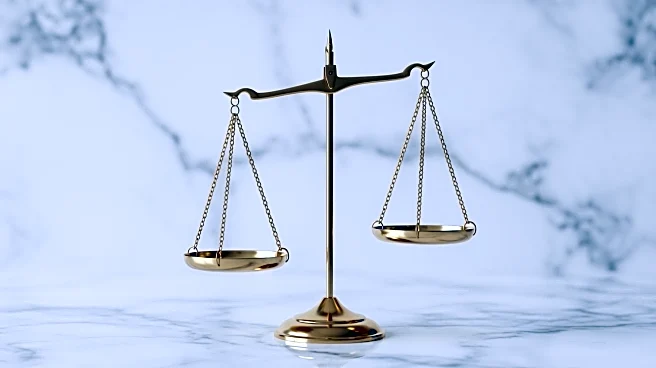What's Happening?
Lori Loughlin and Mossimo Giannulli have announced their separation after 28 years of marriage. The couple, who married in 1997 and have two daughters, are reportedly living apart and pursuing separate
priorities. Tensions are high, with Loughlin feeling betrayed, according to sources. A prenuptial agreement signed by Loughlin could leave her without any of Giannulli's reported $100 million fortune. Legal experts suggest that while prenups can be strict, the long duration of their marriage might influence spousal support decisions. The couple previously faced legal challenges due to their involvement in the college admissions scandal, which resulted in prison sentences for both.
Why It's Important?
The potential financial implications for Loughlin highlight the complexities of prenups, especially in long-term marriages. This situation underscores the importance of understanding prenuptial agreements and their impact on divorce settlements. The case also reflects broader societal issues regarding wealth protection and the legal strategies employed by high-profile individuals. The outcome could influence public perceptions of celebrity divorces and the legal frameworks governing them. Additionally, the scandal's impact on Loughlin's career and earning capacity may play a role in court decisions regarding spousal support.
What's Next?
As the divorce proceedings unfold, the prenuptial agreement's terms will be scrutinized, particularly concerning spousal support. Legal experts suggest that despite the prenup, Loughlin might receive support due to the marriage's length and lifestyle considerations. The couple may also renegotiate terms privately to avoid public scrutiny and protect their reputations. The resolution of this case could set precedents for similar high-profile divorces, influencing how prenups are viewed and enforced in the future.
Beyond the Headlines
The divorce highlights the ethical and legal dimensions of prenuptial agreements, especially in cases involving significant wealth and public figures. It raises questions about the balance between legal protection and fairness in long-term relationships. The case also illustrates the potential for renegotiation in divorce settlements, driven by factors such as public image and family dynamics. The impact on the couple's children and their future relationships may also be a consideration in the proceedings.











